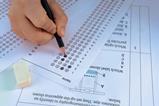Get your students in the zone with lab groups and locations
It’s a familiar routine; you announce to the class that it’s time for a practical and immediately a scramble ensues. Unevenly numbered groups emerge, and one or two reluctant students are left out completely. Behaviour management becomes an issue, and you are forced to split up groups, with some students finding this unfair. Students are reluctant to clear away their personal equipment to make space for the practical apparatus. Groups have varying degrees of success with the experiment; some finish long before others have even set up. At the end, groups return to their seats, leaving a mess behind.

Reflecting on my university days, I recall being placed into a lab group – a mix of students I wouldn’t normally attend lectures with. We remained in our groups throughout the year, and it became a comfort. Even if the practical skills felt unfamiliar, the camaraderie helped us muddle through together. We worked collectively to ensure the lab area was kept tidy – this even contributed to our final marks.
So I decided to replicate this experience to see if it could recreate the same feeling among my students.
How to create effective lab groups
- At the start of the school year, I spend two weeks getting to know my students. I sometimes select groups and, other times, allow them to select their own, and watch closely to see which ones work.
- I also do a quick online poll to see how students rate their confidence and enjoyment of practical work.
- Once I have an idea of the ability and confidence range, I create groups of three or four. I have found this number gives each student enough to do during the practicals, while avoiding students being partnerless with inevitable absences.
- Each group is given a lab group name and location. Crucially, this must be different to where they usually sit to distinguish practicals from other lessons.
- I explain my classroom rules for practical work. At the start of each task, I play a musical timer for one minute. Students must clear their desks completely (as another group will be working there) and move to their lab group locations, taking only their sheet and a pen. They must remain standing and keep their safety equipment on until the practical is complete.
- At the end of the task, I play a timer for about five minutes. During this time, students finish making measurements, clear their lab locations, wipe the benches and return to their usual seats.
At the start of the school year, I spend two weeks getting to know my students. I sometimes select groups and, other times, allow them to choose their own, watching closely to see which ones work. I also do a quick online poll to see how students rate their confidence and enjoyment of practical work.
Once I have an idea of the ability and confidence range, I create groups of three or four. I have found this number gives each student enough to do during the practicals, while avoiding students being partnerless with inevitable absences. Each group is given a lab group name and location. Crucially, this must be different to where they usually sit to distinguish practicals from other lessons.
I explain my classroom rules for practical work. At the start of each task, I play a musical timer for one minute. Students must clear their desks completely (as another group will be working there) and move to their lab group locations, taking only their sheet and a pen. They must remain standing and keep their safety equipment on until the practical is complete. At the end of the task, I play a timer for about five minutes. During this time, students finish making measurements, clear their lab locations, wipe the benches and return to their usual seats.
What are the benefits?
There are lots of advantages to this approach. Having lab locations which students need to physically move to really helps them get ‘in the zone’ for practicals. They recognise immediately that the lab rules now apply; it sets clear expectations for their behaviour. It also helps my students take ownership and pride in their area of the room. Often, I will award prizes for the ‘tidiest workbench’, reminding them of my university experience.
Lab group roles
I often assign rotating roles to members of each lab group. Some examples I have used are:
- Safety advisor – responsible for collecting lab coats and goggles for the group, and making sure they remain on.
- Equipment monitor – reads the equipment list, checking off apparatus when it’s collected and returned. This has the added bonus of ensuring there is no mad scramble at the front for beakers!
- Results recorder – takes charge of completing the results table. Often this role can be differentiated by encouraging students to design their own results table.
Careful groupings aid differentiation of practical work, avoiding the same students taking a back seat or groups finishing at different times. Lab groups also allow me to provide support for those who need an extra boost and to encourage students to help each other. I push lab groups who may be quicker, too. For example, I recently assigned one post-16 group an open-ended titration activity, with an additional challenge of coming up with their own method to find an unknown concentration. At 14–16, you could encourage students to investigate more than one variable; this works particularly well when investigating rates of reaction.
My students seem to enjoy being in lab groups, and it is heartwarming to see how the responsibility builds their maturity during practical tasks. The groupings allow me to praise students for working well as a team, or individual advisors for fulfilling different tasks. Practical activities in my lab are now much calmer, more purposeful and, above all, more fun.
Louise Hussein














No comments yet